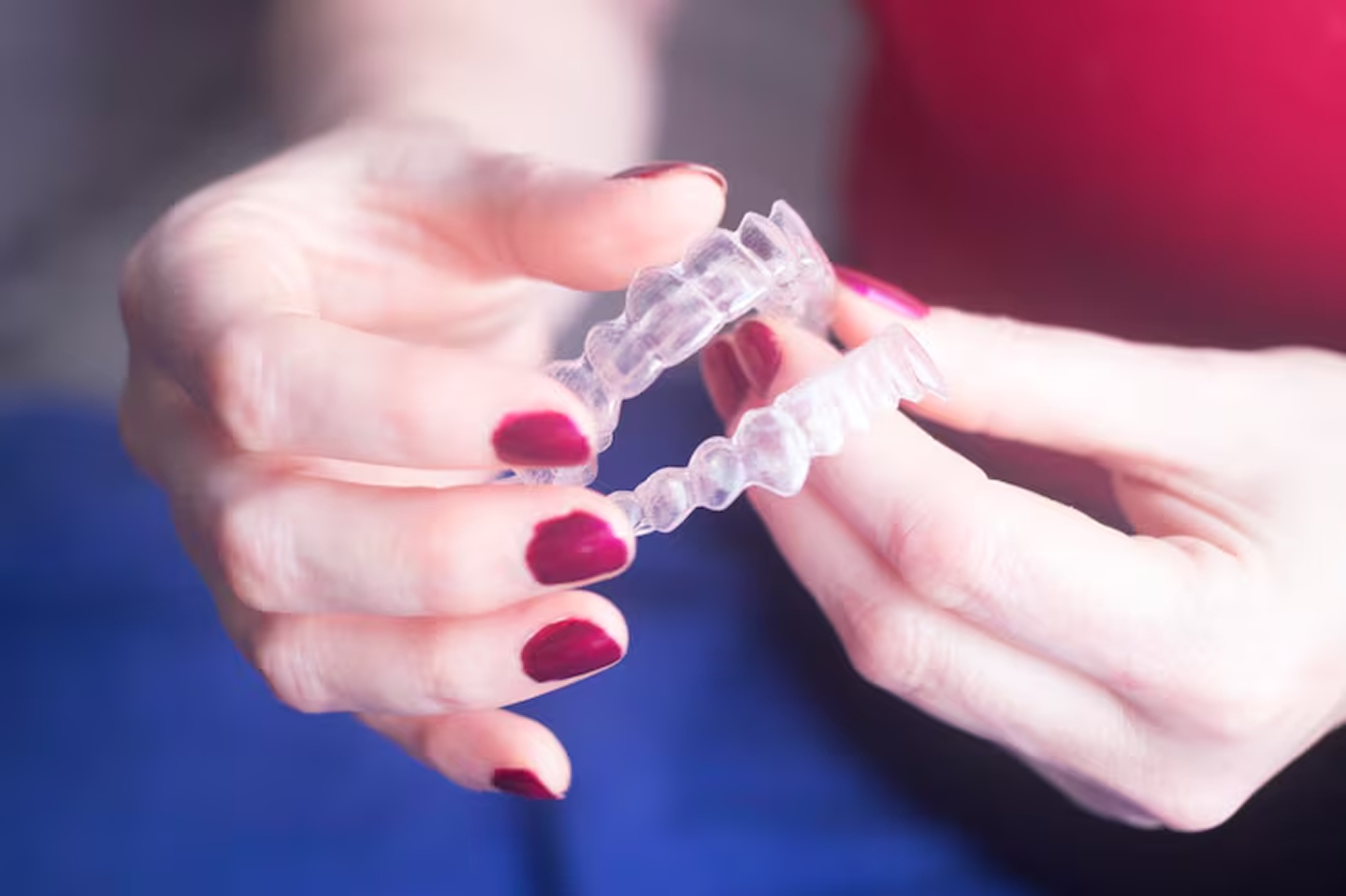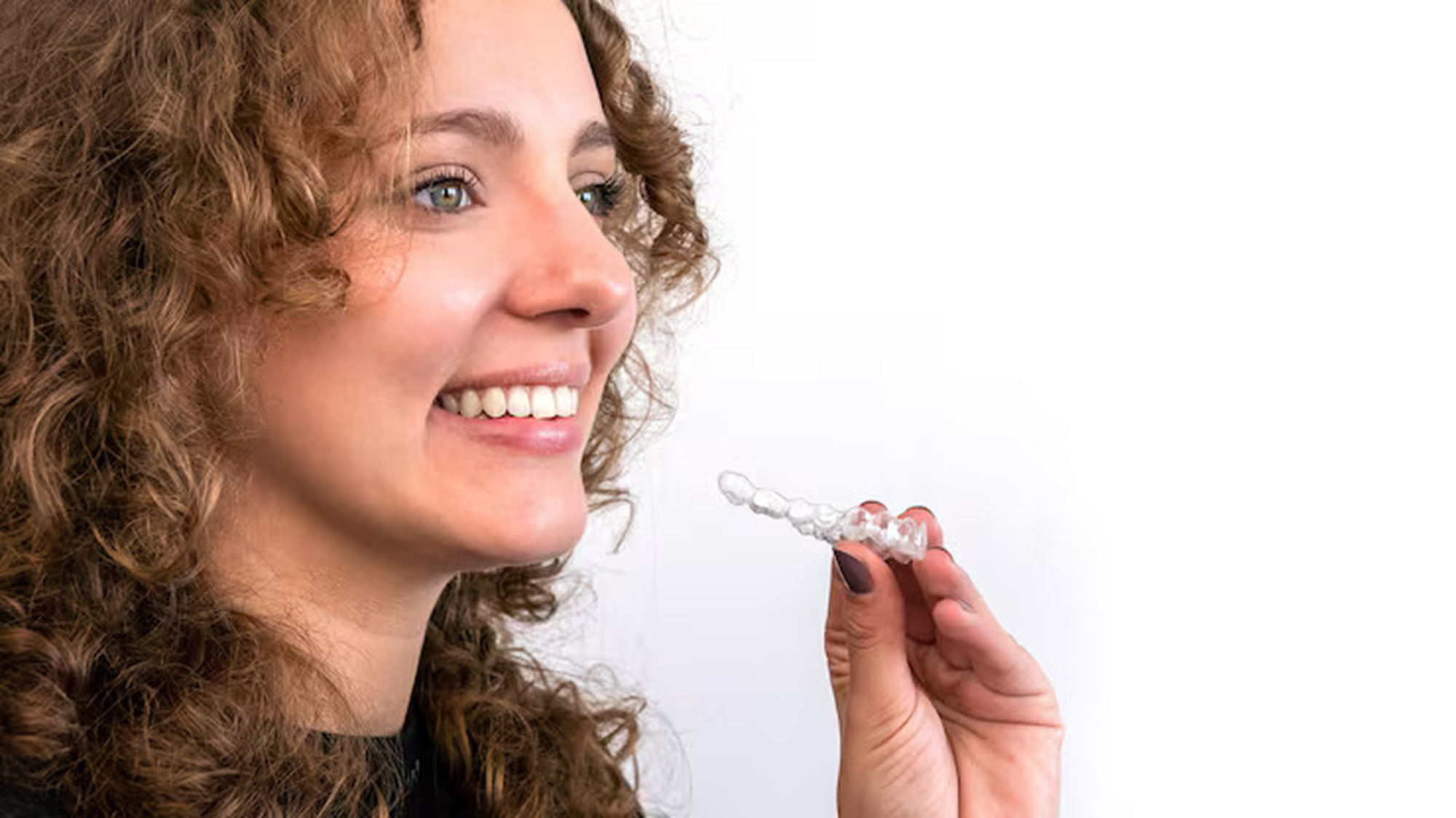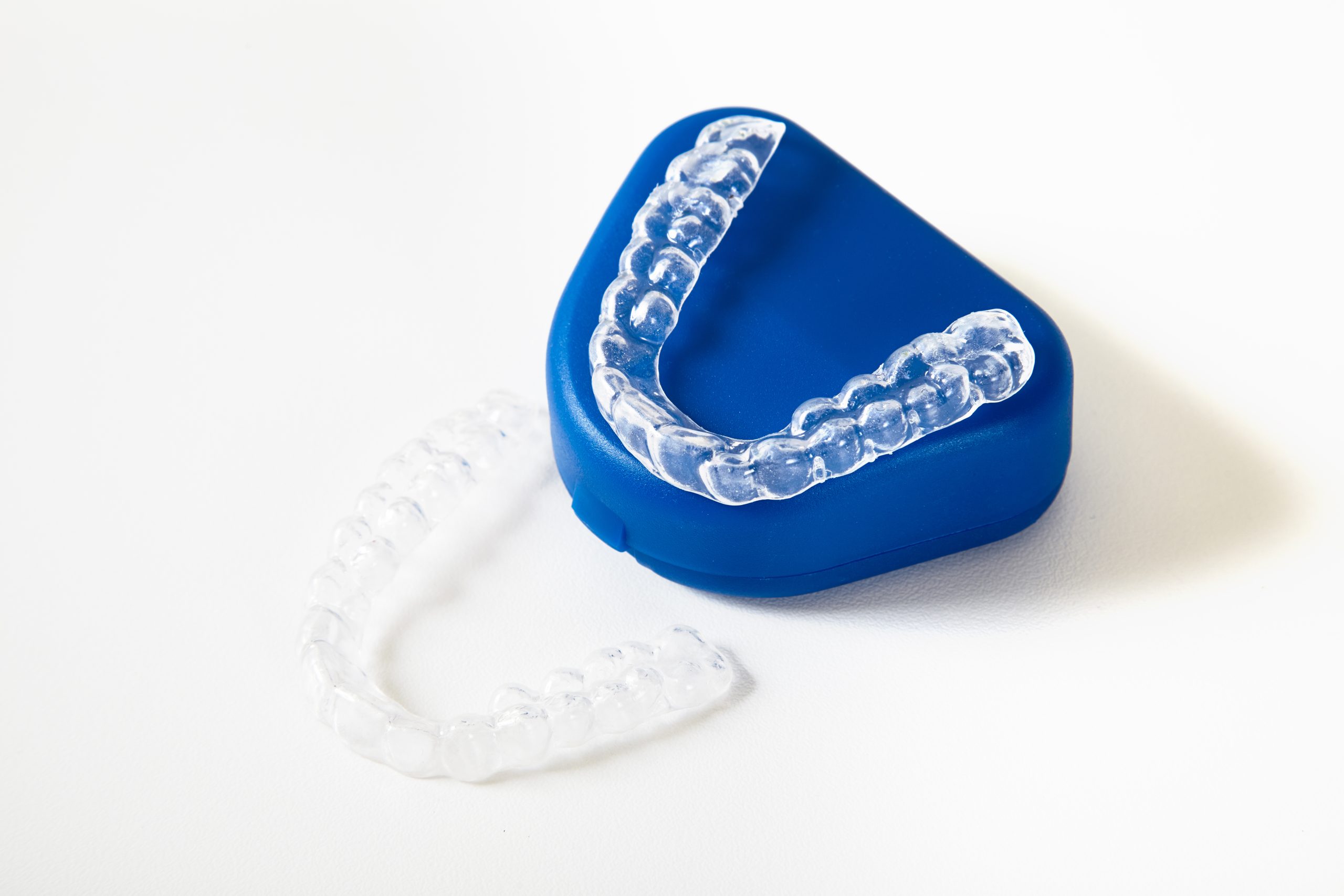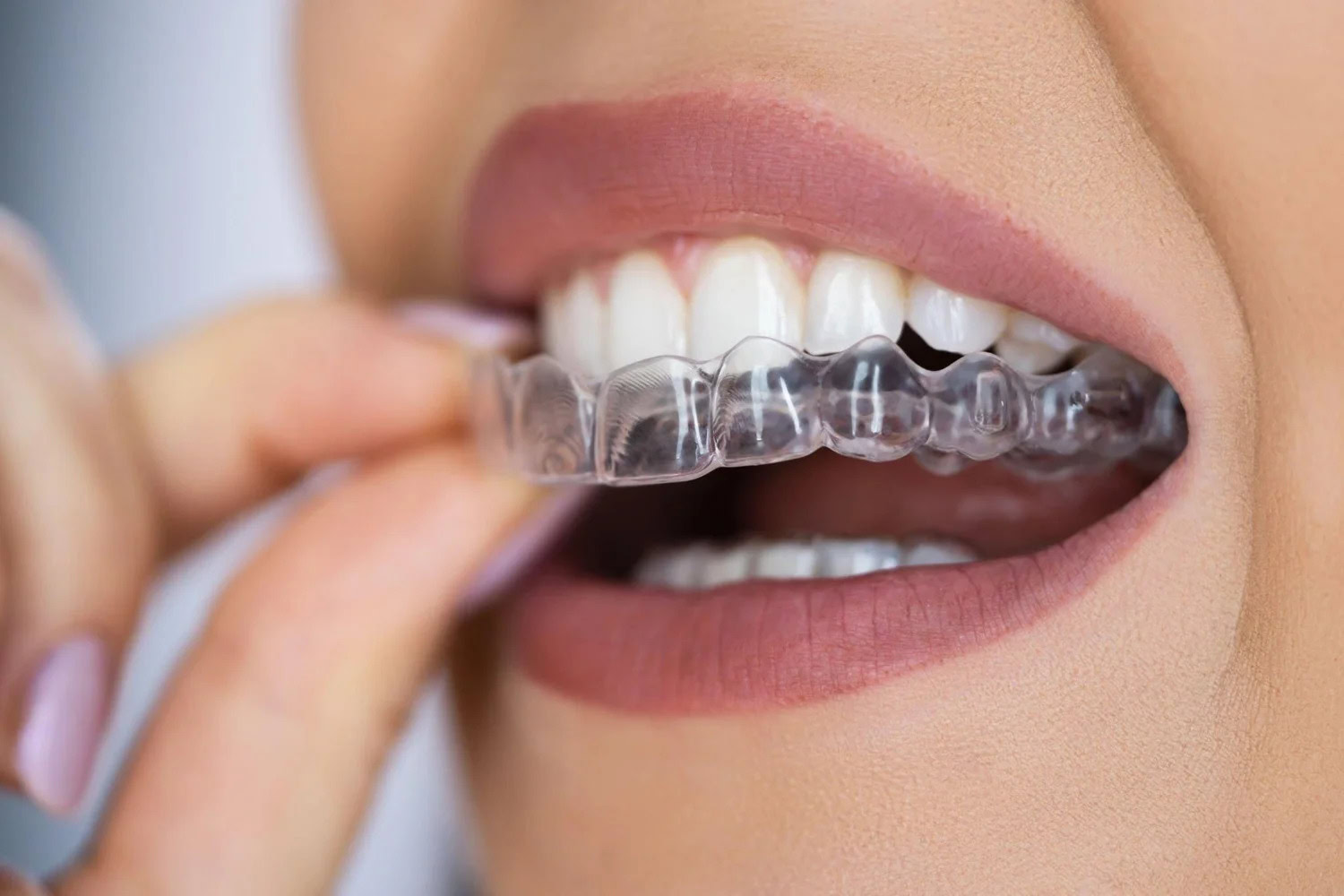Invisalign aligners should be cleaned daily, with rinsing after meals and thorough cleaning at least twice daily. This routine helps maintain the clarity of your aligners and promotes good oral hygiene. Without regular care, food particles and plaque can accumulate, affecting both comfort and cleanliness.
Consistency plays a key role in keeping your Invisalign aligners clean and your treatment on track. Just like brushing and flossing your teeth, cleaning your aligners regularly helps reduce bacteria buildup and prevent discolouration. This contributes to maintaining a healthy mouth and helps the plastic trays stay clear and odour-free.
In this blog, we’ll explore how often you should clean Invisalign aligners, why frequency matters, and safe, evidence-informed ways to keep them in good condition. We’ll also share simple tips on what to use, what to avoid, and how to build a daily cleaning routine that fits your lifestyle. Whether you’re just starting or already undergoing Invisalign treatment, this guide can help you care for your aligners with confidence.
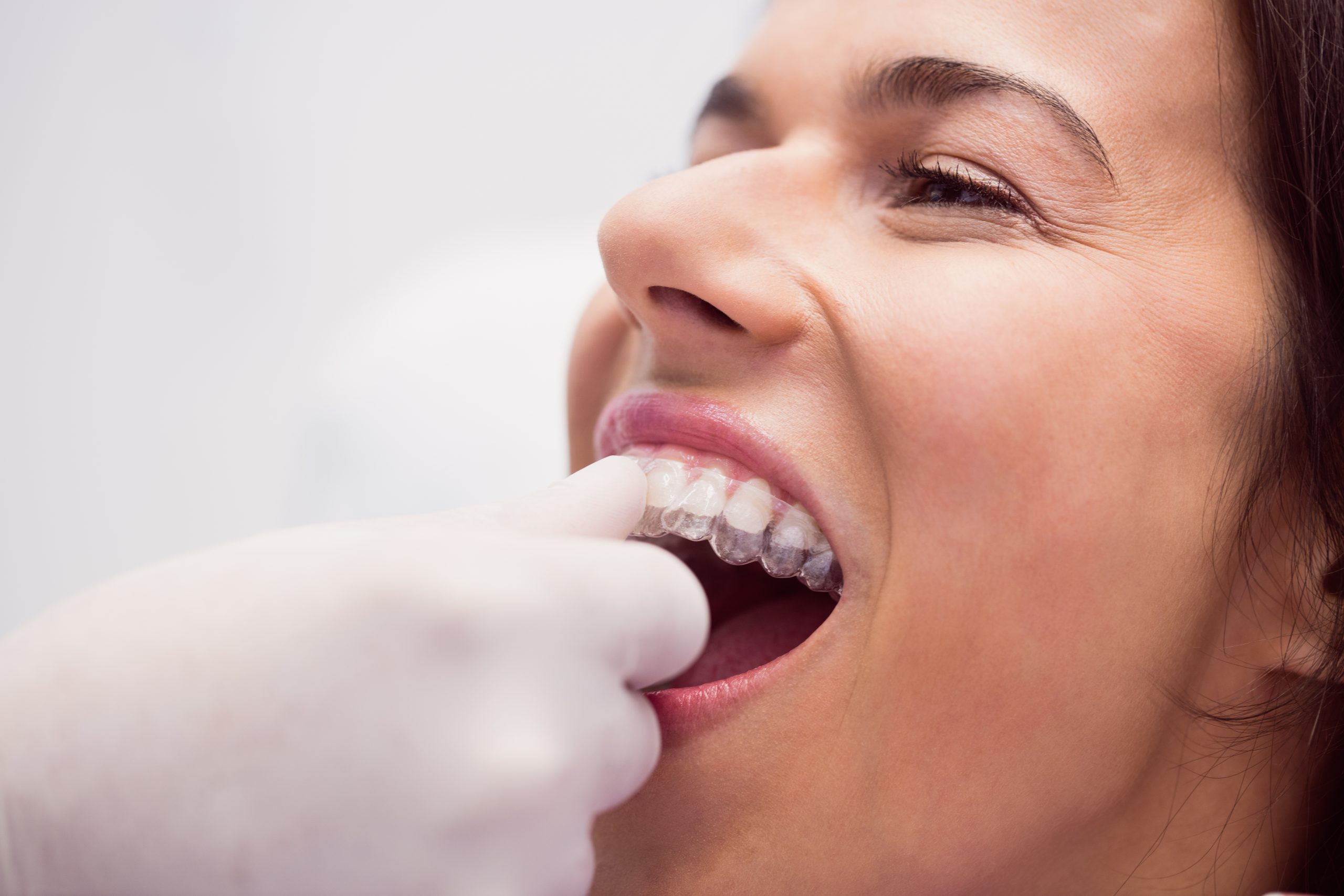
- Cleaning Invisalign aligners daily can help reduce plaque buildup, surface staining, and unwanted odours caused by bacteria and food debris.
- A consistent cleaning approach may contribute to better aligner clarity, patient comfort, and oral cleanliness.
- A recommended daily routine includes rinsing aligners with lukewarm water and gently brushing them with a soft-bristle toothbrush.
- Invisalign cleaning crystals and approved cleaning solutions can be used to help remove residue and maintain a hygienic surface.
- Harsh substances, such as hot water, abrasive toothpaste, and coloured soaps, may damage the plastic material and affect the fit or clarity.
- Habits like rinsing aligners after eating and storing them in a clean case can help keep the aligners free from contamination.
- Avoiding common mistakes, including leaving trays exposed or using household cleaners, may reduce the risk of discolouration or surface damage.
- Seeking advice from a dentist allows for cleaning routines to be tailored to individual needs and aligner types.
Why Cleaning Invisalign Aligners Matters
Regular cleaning of aligners may help reduce residue, bacteria, and discolouration that can affect both oral hygiene and treatment comfort. The points below highlight key reasons why a proper cleaning routine is considered an important part of aligner care:
- Plaque management:
Daily cleaning may help limit the amount of plaque that collects on Invisalign aligners. When plaque is not removed, it can transfer to the teeth and gums during wear. Cleaning the trays may assist in maintaining a cleaner oral environment. - Stain prevention:
Clear aligners are vulnerable to staining from food particles or coloured drinks. Routine cleaning may help reduce visible discolouration over time. This can help keep aligners looking clearer during the treatment process. - Odour control:
Food debris and bacterial buildup can lead to unpleasant smells if aligners are not cleaned regularly. Rinsing and gentle brushing may help remove particles that contribute to odour. Maintaining freshness may contribute to overall comfort. - Limiting bacterial accumulation:
Invisalign aligners are worn for extended periods, which can create a moist environment for bacteria. Without regular cleaning, this may lead to increased bacterial growth on the aligner surface. A consistent cleaning approach may help limit accumulation. - Minimising tooth decay risk:
When aligners trap food debris against the teeth, this may increase the risk of acid exposure and plaque formation. Cleaning the aligners may help reduce residue between the aligners and teeth. Good oral hygiene, including brushing and flossing, remains essential. - Maintaining comfort:
Dirty aligners may feel rough, taste unpleasant, or cause mild irritation for some patients. Aligners that are cleaned regularly may feel smoother and more neutral in taste. This may help make daily wear more manageable. - Protecting aligner fit:
Debris or warping from improper cleaning methods can affect how aligners sit on the teeth. Using suitable cleaning products and avoiding heat sources may help keep the trays in good condition. A proper fit is important for following the treatment plan. - Part of oral hygiene:
Cleaning aligners forms one component of maintaining good oral hygiene during orthodontic treatment. It works alongside brushing, flossing, and regular dental reviews. This routine may help minimise complications like gingival irritation or plaque buildup.
Daily Cleaning Routine
Cleaning Invisalign aligners daily is an important part of maintaining their condition during treatment. This routine may help minimise the buildup of residue, food debris, and other substances that can affect their clarity and hygiene. The steps below offer practical, evidence-informed suggestions for cleaning aligners safely and consistently:
- Rinse with lukewarm water:
After removing the aligners, rinse them under lukewarm water to remove surface debris. Avoid using hot water, as it may distort the plastic material. Rinsing after eating or drinking can also help reduce residue on the trays. - Brush with a soft toothbrush:
Use a separate soft-bristle toothbrush to gently clean the aligners in circular motions. Toothpaste is generally not recommended, as it may contain abrasives that can scratch the aligner surface. A mild, clear soap may be used as an alternative. - Use recommended cleaning products:
Invisalign cleaning crystals or other approved solutions are formulated specifically for aligners. These products are designed to clean without damaging the plastic trays. Always follow the product instructions provided by the manufacturer. - Rinse thoroughly after cleaning:
Once cleaned, rinse the aligners well under lukewarm or cool water to remove any remaining soap or solution. This step helps avoid any residue being transferred to the mouth. Check that the trays are visibly clean before reinserting. - Air dry if not wearing immediately:
If the aligners are not being worn straight away, allow them to air dry in a clean, dry case. Avoid using cloth or tissue, as fibres can stick to the trays. A dry environment may help limit moisture-related bacteria buildup. - Repeat twice daily:
This cleaning routine can be followed in the morning and evening as part of a general oral hygiene routine. Additional cleaning after meals may also be helpful. Regular care may assist in keeping aligners clear and odour-free during treatment.
Safe Cleaning Methods
Invisalign aligners require care that protects the plastic material while helping reduce residue and odour. While brushing is important, not all cleaning methods are suitable.
Brushing With a Soft Toothbrush
Brushing is an accessible and frequently used way to clean Invisalign aligners. Using a soft-bristled toothbrush and gentle technique may help clean the surface without affecting the aligner’s fit or transparency. The following practices are commonly recommended:
- Use a soft-bristled toothbrush:
A soft toothbrush, separate from the one used on teeth, may help clean Invisalign trays effectively. Soft bristles are less likely to cause wear on the plastic material. Brushing with water alone can help dislodge food particles and plaque. - Avoid abrasive toothpaste:
Many toothpastes contain polishing agents that may contribute to surface wear. Even whitening or “gentle” pastes may be too harsh for aligners. For this reason, toothpaste is generally not recommended for cleaning aligner trays. - Brush using gentle circular motions:
Using light pressure and a circular technique may help remove buildup without straining the plastic. Aggressive scrubbing or hard-bristled brushes may lead to visible wear or dulling. This method can be included in a broader daily cleaning routine.
Using Invisalign Cleaning Crystals or Approved Cleaning Products
Invisalign cleaning crystals and similar products may be used in addition to brushing to help maintain aligner hygiene. These cleaning solutions are usually designed for daily or occasional soaking. The points below highlight practical usage and precautions:
- Consider aligner-specific cleaning crystals:
Products like Invisalign cleaning crystals are formulated for use with clear aligners and retainers. When used as directed, they may assist in removing residue and minimising odour. Crystals are usually dissolved in lukewarm water, with trays soaked for a specified time. - Use approved cleaning solutions as directed:
Some effervescent tablets or cleaning liquids are labelled for clear aligner use. These products are designed to avoid damaging the plastic surface when used appropriately. Always read product instructions and consult a dental professional if uncertain. - Rinse thoroughly after using cleaning products:
Cleaning solutions may leave a residue if not rinsed completely. Lukewarm or cool water is usually recommended for rinsing. Verifying the trays are free from any remaining solution before reinsertion is part of safe daily use.
Alternatives to Avoid Damage
While some household alternatives are commonly discussed, not all are appropriate for clear aligner materials. Certain substances may cause discolouration, surface wear, or leave behind residue. The following tips can help avoid unintentional damage:
- Mild soap may be suitable:
Clear, unscented antibacterial soap may be used to clean aligners when aligner-specific solutions are unavailable. It should be free from colourants, fragrances, and moisturising agents. Check with a dental professional before using any household cleaning products. - Avoid denture cleaners and ultrasonic devices without guidance:
Some denture tablets contain ingredients not intended for aligner materials. Similarly, ultrasonic cleaners may vary in strength and compatibility with clear plastic. Use of these methods should only occur under professional advice. - Do not use harsh household products:
Items like bleach, white vinegar, and abrasive powders are not suitable for cleaning aligners. These products may damage the plastic surface or leave chemical residue that is unsuitable for oral use. Use only cleaning products specifically labelled or recommended for aligners.
Habits That Help Keep Aligners Clean
Beyond daily brushing and soaking, certain habits may help keep Invisalign aligners in better condition during orthodontic treatment. Incorporating these behaviours into your routine can support tray cleanliness and reduce exposure to unwanted particles.
Rinse After Eating and Drinking
Rinsing after meals is often recommended to remove food particles from the mouth and trays. This habit may help keep aligners clearer and reduce the accumulation of odour-causing residue. While not required, it can be a helpful step in maintaining everyday hygiene.
- Rinse your aligners after meals:
Gently rinsing aligners with lukewarm or cool water may help remove food particles or debris. This step can also help reduce the risk of surface staining or bacterial buildup. A brief rinse after eating can be a simple addition to your cleaning routine. - Rinse your mouth before reinserting:
Swishing water around the mouth after eating may help remove food residue before the aligners are worn again. This habit may assist in reducing food particles being trapped between teeth and trays. It may also support better comfort during wear. - Avoid reinserting without rinsing:
Reinserting aligners immediately after eating without rinsing may increase contact with food debris. Over time, this may contribute to residue forming on the aligner surface. A quick rinse may reduce this exposure and help keep trays cleaner between meals.
Store Aligner Trays Properly
Proper storage can help reduce the chance of contamination, damage, or misplacement. When trays are not being worn, where and how they are stored may influence overall tray hygiene and condition. The following habits are commonly included in daily aligner care:
- Use a protective aligner case:
A ventilated storage case can provide a designated place for aligners when not in use. Keeping trays in a closed case may reduce exposure to surfaces, airborne particles, or accidental drops. This practice also helps avoid losing trays during meals or outings. - Avoid wrapping trays in tissue or cloth:
Napkins or cloths can retain moisture and fibres, which may transfer to the aligners. These materials also increase the likelihood of accidentally discarding trays. A dedicated aligner case offers a more secure and hygienic storage option. - Clean the aligner case regularly:
Like any hygiene product, aligner cases may accumulate moisture or residue over time. Cleaning them with mild soap and water may assist in reducing bacterial buildup on internal surfaces. It’s helpful to let the case air dry completely before placing trays back inside.
Mistakes to Avoid When Cleaning Aligners
Maintaining clean Invisalign aligners is an important part of oral hygiene, but not all cleaning methods are suitable for plastic trays. Certain habits or materials may affect the appearance, comfort, or condition of aligners over time. Understanding the following common cleaning mistakes can help promote a more effective and gentle care routine:
- Using hot water:
High temperatures may soften or distort the plastic material of Invisalign trays. This may affect how the trays sit on the teeth and reduce comfort during wear. Using lukewarm or cool water is generally advised for both rinsing and cleaning. - Brushing with abrasive toothpaste:
Some toothpastes contain small particles intended to clean enamel, which may scratch aligners. Over time, these scratches can cause the trays to appear dull or hazy. A soft toothbrush used with mild soap or water is commonly recommended instead. - Cleaning with coloured or scented soaps:
Soaps with dyes or fragrances may leave behind a taste or residue on the trays. This can affect clarity and cause an unpleasant sensation when worn. Clear, fragrance-free soap is often used as an alternative when no aligner-specific product is available. - Using household cleaners or bleach:
Products like surface sprays, bleach, or general-purpose cleaners are not formulated for use with oral appliances. These may damage the surface or leave behind residue that is unsuitable for intraoral use. It may be safer to choose products designed specifically for aligner or retainer care. - Skipping Rinsing After Cleaning:
After cleaning with soap or soaking agents, aligners may retain a small amount of product on the surface. Without rinsing, this residue may cause an unusual taste or texture when placed back in the mouth. Rinsing with lukewarm water helps complete the cleaning process. - Leaving aligners unprotected:
Aligners that are left out in open spaces or wrapped in tissue may be more likely to collect dust or be misplaced. These materials can also retain moisture, which may affect hygiene. A ventilated storage case is often used to store trays safely between uses. - Using toothbrushes with hard bristles:
Hard-bristled toothbrushes may contribute to surface scratching or discomfort during cleaning. These scratches may also hold onto bacteria or stain over time. A soft-bristled toothbrush is generally considered gentler on aligner material. - Soaking in vinegar or baking soda alone:
Although sometimes suggested for cleaning, vinegar or baking soda may leave residue or alter the tray’s taste if not rinsed thoroughly. These ingredients are not always suitable for regular use with clear aligners. It’s recommended to speak with a dental professional before using alternative cleaning mixtures.
Role of Professional Guidance
Invisalign patients are encouraged to maintain regular contact with their dentist throughout the treatment process. Professional input may help support day-to-day cleaning routines and identify areas for improvement. Regular check-ups also provide an opportunity to review oral hygiene, aligner condition, and treatment progress in a structured setting.
- Individualised care advice:
Invisalign treatment plans vary depending on the patient’s oral health, age, and lifestyle factors. A dentist may provide personalised recommendations for cleaning techniques or frequency. This guidance can promote better outcomes without replacing daily care responsibilities. - Review of aligner condition:
Over time, aligners may show signs of staining, residue, or wear. During appointments, a dentist may inspect the trays to assess whether current cleaning practices are appropriate. This review may also help identify early surface changes. - Support for oral hygiene routines:
Dentists can discuss brushing, flossing, and aligner care in the context of each patient’s needs. Adjustments to technique or choice of cleaning tools may be recommended where needed. These conversations often form part of standard treatment check-ins. - Monitoring treatment progress:
Aligner fit and tooth movement may be assessed during routine appointments. This can help determine whether trays are seating properly and whether adjustments to care are needed. Regular reviews may contribute to achieving the intended treatment goals. - Product usage guidance:
Some Invisalign patients have questions about alternative cleaning methods, such as baking soda, vinegar, or denture cleaning tablets. A dentist may offer clarification on which products are more compatible with aligner materials. This helps avoid potentially unsuitable cleaning approaches. - Advice on aligner replacement:
If aligners become discoloured, misshapen, or difficult to clean, a dentist may suggest whether continued use is appropriate. These recommendations are usually made based on tray condition and stage of treatment. Replacement decisions are usually discussed during ongoing care.
Final Thoughts
Cleaning your Invisalign aligners daily is a simple but important step in maintaining your oral health throughout the treatment process. Using safe cleaning methods may help reduce plaque buildup, minimise odour, and keep the aligners clearer. Avoiding harsh substances like hot water or abrasive toothpaste can also help prevent surface wear or discolouration.
Soft-bristled toothbrushes, lukewarm water, and appropriate cleaning products are commonly recommended as part of a daily routine. If you’re uncertain about any part of your aligner care, checking in with a dental professional may help clarify your options. Regular reviews may also include feedback on aligner condition and cleaning technique.
Enso Dental North Perth provides Invisalign treatment and can assist patients seeking guidance on aligner care. Appointments may include discussion of safe cleaning practices, oral hygiene support, and answers to common questions about aligner maintenance. You may wish to book a consultation to receive tailored advice or explore whether your current routine meets your needs.



